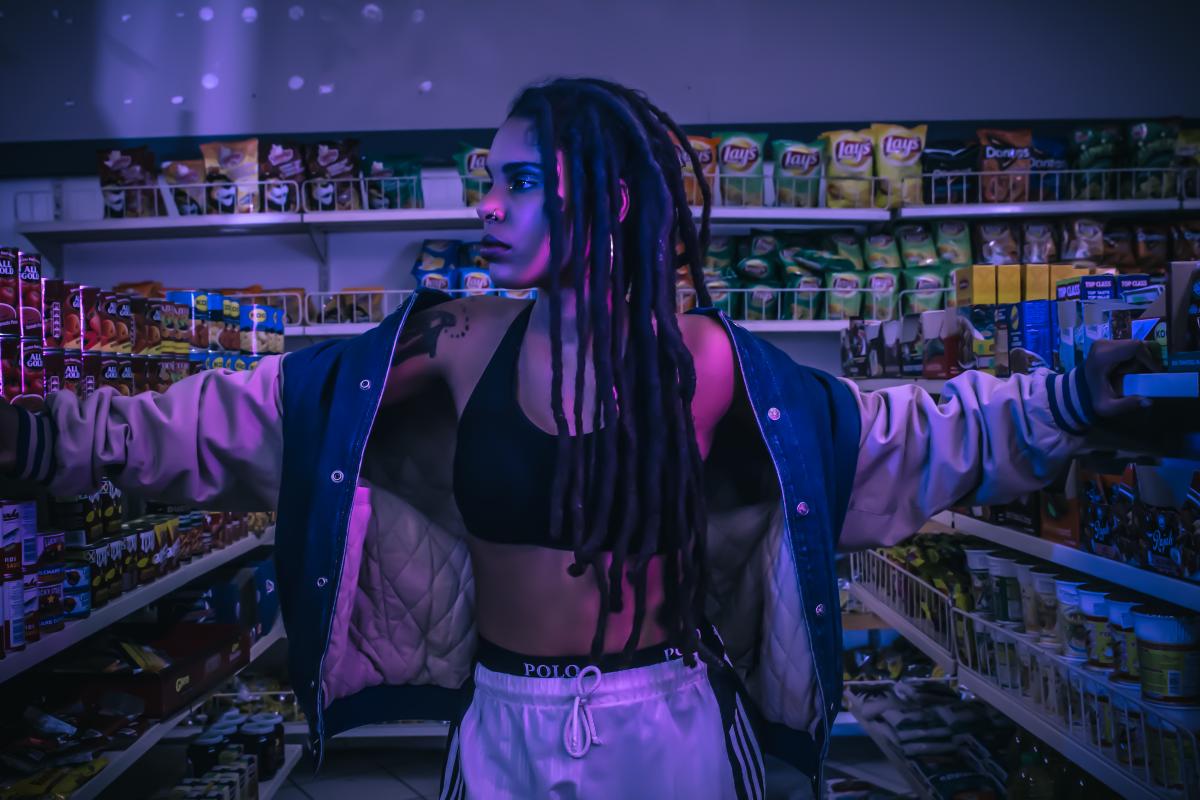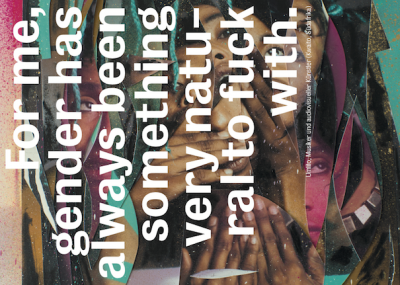In Post Apartheid South Africa a new generation of young artists are drawing on the country’s idiosyncratic past and its unsettled present. They express queer visions for the future. From the Norient book Seismographic Sounds (see and order here).
There is a word that causes great entanglement up and down the African continent, from Cairo to the Congo to the Cape. It hardly receives an utterance and when it does it’s usually met with glances of disapproval, outright disavowal or denial. This word that we argue vociferously about we are told is not ours. A pale faced import with no place here, as though words belong to some people and not others. It has come, apparently, to crawl onto our bodies and slip into our minds, staking a claim to the language a select educated few would use to make themselves known. Yet to be of this word in Africa, to let it «rub up against Africa» as Pumla Dineo Gqola puts it, is a thing, an existence, an experience, an expression and an undeniable reality: «queer». I wonder about the sound of this rubbing, this meshing and melding – the expression of the very visceral nature of queer, the rolling of flavors, colors and textures, the possibility of «queer music».
On a continent like Africa, with a history of deep wounds that continue to fester around issues of race, gender and sexuality, it is hard to see how queer music would have a place. Alongside this, the growing issue with making «queer music» is that it somehow relegates musicians to a musical genre that only appeals to a select few. The label is taken as an imposition that obfuscates the artist’s own narrative and particular sound, coupled with the idea that queer music here is the antithesis of what it means to be of here. But what does it mean to make music that has queer undertones with an African bent? Music that presents its own narrative? This it must do if it is going to be considered both African and yet still have queer inflections and inclinations. Eve Sedgwick in Tendencies describes «queer» as «the open mesh of possibilities, gaps, overlaps, dissonances and resonances, lapses and excesses of meaning when the constituent elements of anyone’s gender, of anyone’s sexuality aren’t made (or can’t be made) to signify monolithically». I like the idea that different outcomes can arise from the dissonances and resonances of meaning-making, and this is exactly what I see in the work of South African-based artists Umlilo, Dope St Jude and Hlasko.
Umlilo, to my mind, is one of few artists in this country (let alone this continent) troubling the space of gender and expectations of «rightness», whether this be in relation to race, culture, body or presentation. Masculinity, in particular, is a powerful cultural trope here. Over the last two decades, since that historic moment of 1994, it has been very clear that much of what was established on paper in South Africa has rarely worked in practice as a means of protection for those not considered white and homonormative. Lesbian and gay people (and I mean lesbian and gay – not the convenient erasure that is LGBTI) gained rights not simply because they had been oppressed during Apartheid or because they had supported the Anti-Apartheid movement – although this certainly stood them in good stead – but because the Constitution’s Bill of Rights clearly enshrines the rights of all minorities in South African society today. You see, the Constitution for its part is a refreshingly progressive, even radical document that opens up a future in which to be queer is completely theoretically viable, possible and protected. It does not mean though that this is in fact the experience of people who present themselves as queer, those pushing up against the boundaries of what to all intents and purposes remains a highly conservative, religious and traditional society.
Queer Bodies Reclaim Their Space
There are vast and unimaginable chasms between what it is to be queer in South Africa today, let alone black and queer, and the theoretical rights that come with living and performing in a place of perceived exceptionality. Perhaps unsurprisingly, Umlilo’s EP released in June 2015 is entitled Aluta (The Struggle). His sound and visuals are a mixture of elements depicting traditional cultural elements layered over international influences, alongside bodies that are often indiscernible, yet mesmerising. «Aluta» is what happens when that rubbing – that friction – makes fire. It is dazzling.
From «Chain Gang» (2014) to his video «Reciprocity» (2015), Umlilo is a true purveyor of the excess of meaning. He is a musician and a visual artist, the combination of the two proving deadly. The androgynous form remains a central trope to all of his work, as do images of traditional culture interlacing masculinity and spiritual cleansing alongside stuttering images and sounds of ethereal beauty. On a continent where drawing influence from beyond its shores is often seen as sacrilegious, Umlilo not only borrows but deftly recreates, visibly and audibly staking a claim to a much maligned space.
The politics of a not-so-distant past and an unrealized future – or maybe it’s a not-so-distant future and an unrealized past – come to fruition in the work of Dope St Jude. Her video for «Keep in Touch» (2015) sees a mash up of voguing and the resurrection of a form of urban queer slang found largely in the Western Cape of South Africa called Gayle language. In a time when the questionability of queer in Africa is acute, the use of Gayle is a potent snub to the idea that there is no history to being queer here, that you are not of this place. A language largely used during Apartheid to ensure conversations between queers could happen undetected by the ever-watchful hand of the security police, Gayle developed within drag communities as a nod to ideas of camp and subterfuge.
Apartheid was at its heart a system of racist puritanical control. This applied particularly to public spaces. Certain bodies were allowed to inhabit and navigate particular spaces and others simply were not – queer bodies were patently not allowed to exist. Dope St Jude reaches back in time while very much producing the South African present. She is both king and queen, existing beyond bifurcated ideas of sexuality, heteronormativity and perceptions of patriarchy.
A Post-Queer Sound for the Future
While Umlilo and Dope St Jude are visually hard-hitting and overtly political, Hlasko presents what I can describe best as a soundscape, an exquisite otherworldliness. His music is transcendental and at times alien, clicking and glitching as though time found itself controlled, split and then stepped through. This is dissonance and resonance personified. It is perhaps this liminality, the refusal of the singular, that leads to a space unlike any other. If queer and Africa rub against one another in some sort of creative spawning then this is where they might very well meld and reach transcendence.
Hlasko’s Bandcamp page sums this up almost too perfectly: «My philosophy on past, present and future come into the past and set your future free.» His sound is cybernetic, grasping social realities and social relations by their innards and thrusting them forward into space unseen but very much existing within technological possibilities. It is a future of fiction and fact intertwined into a stirring politics of sound. In many ways Hlasko represents something we have yet to fully grasp: an almost post-queer sound that is less about the politics of now and more about the possible future.
Umlilo, Dope St Jude and Hlasko represent a generation of young artists actively troubling the many notions of immutability that continue to dominate the South African and African political landscape and imaginary. Their sounds, visuals and soundscapes both destroy and reconstruct, sometimes almost simultaneously. Drawing from a very particular and situated South African and African past that has been exemplified by struggle and creating a present that in many ways continues to require it, they represent powerfully disruptive forces, each rubbing against the lines between the very understandings of what it is to be of here – what has been, and inevitably a future that is yet to come.



